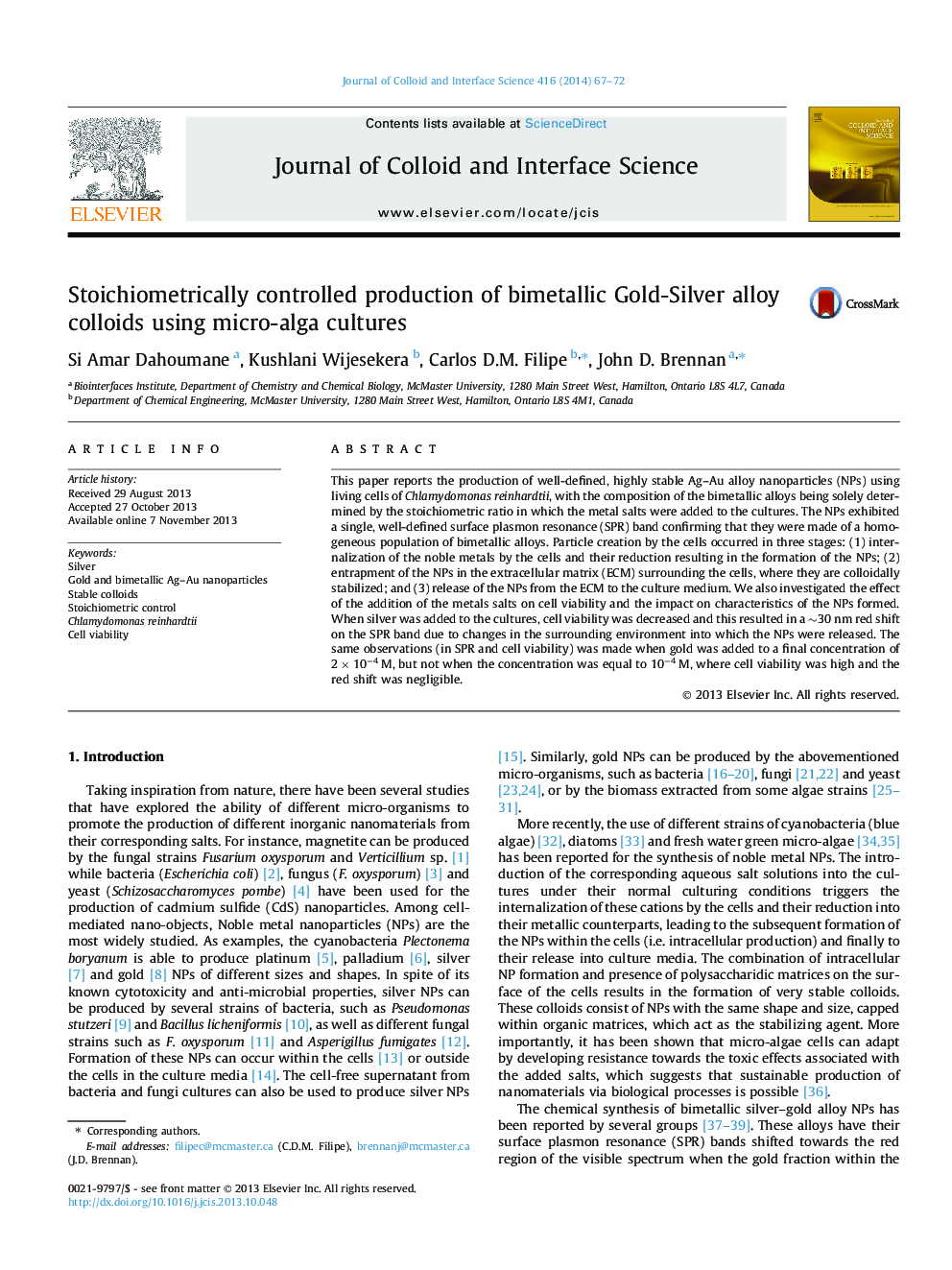| Article ID | Journal | Published Year | Pages | File Type |
|---|---|---|---|---|
| 607392 | Journal of Colloid and Interface Science | 2014 | 6 Pages |
•The microalgae Chlamydomonas reinhardtii was used to produce Ag–Au nanoparticles.•NP composition is easily controlled by adjusting the molar ratio of metals added.•Silver ions decreased cell viability more readily than gold ions did.•NPs displayed single and well-defined surface plasmon resonance (SPR) bands.•SPR shifts indicated homogeneous bimetallic alloys of the same population.
This paper reports the production of well-defined, highly stable Ag–Au alloy nanoparticles (NPs) using living cells of Chlamydomonas reinhardtii, with the composition of the bimetallic alloys being solely determined by the stoichiometric ratio in which the metal salts were added to the cultures. The NPs exhibited a single, well-defined surface plasmon resonance (SPR) band confirming that they were made of a homogeneous population of bimetallic alloys. Particle creation by the cells occurred in three stages: (1) internalization of the noble metals by the cells and their reduction resulting in the formation of the NPs; (2) entrapment of the NPs in the extracellular matrix (ECM) surrounding the cells, where they are colloidally stabilized; and (3) release of the NPs from the ECM to the culture medium. We also investigated the effect of the addition of the metals salts on cell viability and the impact on characteristics of the NPs formed. When silver was added to the cultures, cell viability was decreased and this resulted in a ∼30 nm red shift on the SPR band due to changes in the surrounding environment into which the NPs were released. The same observations (in SPR and cell viability) was made when gold was added to a final concentration of 2 × 10−4 M, but not when the concentration was equal to 10−4 M, where cell viability was high and the red shift was negligible.
Graphical abstractFigure optionsDownload full-size imageDownload high-quality image (63 K)Download as PowerPoint slide
